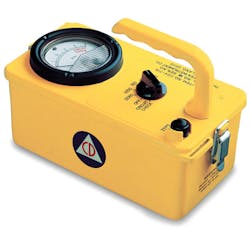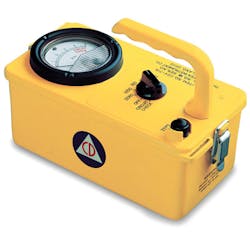Army mulls COTS radios to help detect radioactive materials and nuclear weapons
ABERDEEN PROVING GROUND, Md. - U.S. Army researchers are approaching industry to find rugged commercial off-the-shelf (COTS) radios that can help detect and characterize radioactive materials that could indicate the presence of terrorist nuclear weapons, dirty bombs, or other radioactive weapons of mass destruction.
Officials of the Army Contract- ing Command at Aberdeen Proving Ground, Md., have issued a sources-sought notice (W911SR-17-MRDS-Radio) for the Man-portable Radiological Detection System (MRDS) project.
MRDS seeks to find COTS or government off-the-shelf (GOTS) radio products to support a system able to detect and characterize radiological threat materials.
These radios should be able to work in an RF-restricted environment, and should be mature products that meet Technology Readiness Level (TRL) 8, or that are completed and qualified through test and demonstration.
Army researchers particularly are looking for contractors and suppliers with knowledge and experience in military communications, who can supply ready-to-use rugged, reliable, high-throughput Internet Protocol (IP) radio communications solutions.
The Army Contracting Command is issuing this source-sought notice on behalf of the Joint Project Leader for Radiological and Nuclear Defense (JPL-RND) at the Joint Project Executive Office for Chemical Biological Defense (JPEO-CBD) at Aberdeen Proving Ground.
These experts are trying to establish a knowledge baseline to help form a radio communications solution strategy, and may use this information for a future solicitation or to incorporate into existing contracts.
Industry responses may consist of white papers, capability statements, product brochures, specifications, or other relevant information focusing on possible communications solutions.
Companies interested should e-mail responses in .pdf format to the Army's Diane Dei at [email protected] and Adam Sheir at [email protected].
E-mail questions or concerns to the Army's Adam Sheir at [email protected].
More information is online at http://bit.ly/1hoBTQK.

